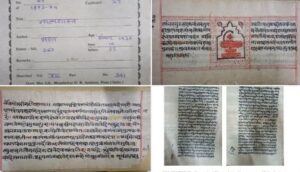The date is out… India will launch its ‘Mission Vaccination’, one of the world’s biggest coronavirus inoculation drive, on 16 January to curb the spread of Covid-19 disease which has so far infected 1.04 crore people, according to the Health Ministry (data released at 8 am on Saturday).
The decision, the government said, was taken at a high-level meeting where PM Narendra Modi reviewed the status of coronavirus and Covid-19 vaccine preparedness across states and union territories.
“After the detailed review, it was decided that given the forthcoming festivals including Lohri, Makar Sankranti, Pongal, Magh Bihu etc, the COVID-19 vaccination will start from 16th January 2021,” it said.
The first shots of a Covid-19 vaccine will be given to nearly 3 crore healthcare workers and other frontline staff, according to the Health Ministry.
PM Modi tweeted that India will take a landmark step forward in fighting COVID-19 on January 16. “Starting that day, India’s nationwide vaccination drive begins. Priority will be given to our brave doctors, healthcare workers, frontline workers including Safai Karamcharis (sanitation workers,” the prime minister tweeted.
After healthcare and frontline workers, priority will be given to around 27 crores which include those above 50 years of age and the under-50 with co-morbidities.
India had recently granted emergency use authorisation to two vaccines, Oxford’s Covishield being manufactured by Serum Institute in India and Bharat Biotech’s Covaxin. However, public confidence has been dented by the controversial emergency nod granted to Bharat Biotech International Ltd.’s Covaxin as the vaccine has yet to clear phase-3 human trials.
There are 2,24,190 active cases of coronavirus in the country. More than 1.5 lakh people have died so far. However, the overall caseload for India is the second-highest in the world after the US.
In the review meeting, Modi was also briefed about the Co-WIN vaccine delivery management system, a unique digital platform that will provide real-time information of vaccine stocks, their storage temperature and individualised tracking of beneficiaries of the COVID-19 vaccine. More than 61,000 programme managers, two lakh vaccinators and 3.7 lakh other vaccination team members have been trained so far as part of training at states, districts and block levels, it said.
Three phases of dry runs have been conducted across the country, with the third dry run conducted on Friday across 615 districts covering 4895 session sites in 33 states and UTs.
Also Read: When, how and who will get Covid vaccines in India? All about it
As India gears up to start its vaccination drive against COVID-19, the Director-General of Civil Aviation (DGCA) on 8 January issued a set of guidelines that airline operators must follow while transporting the vaccine. It directed the airport authorities and airlines to use dry ice as the refrigerant material during the transportation to maintain the low temperatures between -8° C to -70° C. “Though there may be different refrigerant options, use of dry ice (Carbon Dioxide Solid) is the most commonly used, affordable and readily available refrigerant material available in the country for transportation of perishables by air,” noted Director General of Civil Aviation (DGCA) in the guideline.
DGCA dos and dont’s for COVID-19 vaccines transportation
1) Loading – Methods to ensure that only packaging compliant with the applicable regulations is loaded on board.
-Procedures for reporting and addressing damaged/leaking packages.
2) Unloading -Instructions on precautions to be taken while the opening of cargo or cabin doors.
-A second person shall always be available outside the cargo bay or cabin to trigger the alarm in case of any unforeseen event.
-Procedures for reporting and addressing damaged/leaking packages.
3) Ensure proper ventilation before entering a cargo compartment containing dry ice.
4) Minimum ground time without ventilation.
5) Carry a CO2 detector when entering cargo compartments.
6) Develop emergency procedures in case of an incident or accident.
7) Evaluate the potential for cargo containing dry ice to be loaded as late as possible and unloaded as early as possible.










JEE Main Toppers 2025: 24 candidates score 100 percentile. Full list
Bhagavad Gita, Natyashastra added to UNESCO Memory of World Register
Inside Modi, Musk’s Tech Talk: What was discussed